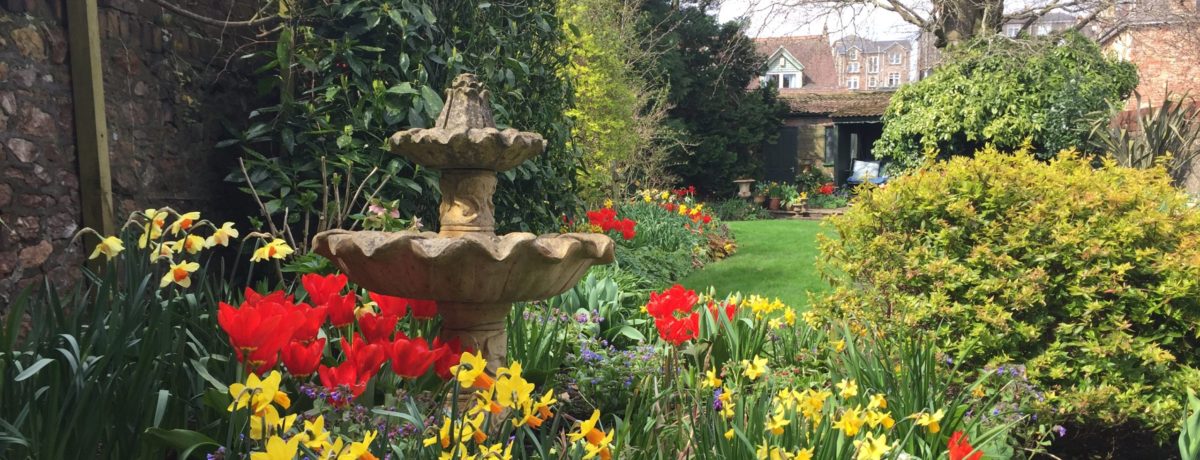Feest Isolation Days – 27 April
Yesterday was Sunday again! Don’t weekends come around quickly? We alter our routine on a Sunday, stay in bed longer, have a different breakfast, wear a zippier outfit. When Terry asks what I would like to do today, I suggest we go out for Brunch. So we did! Out to the garden….at Chez Feest! The weather is splendid and all the walkers and runners think so too. I have never seen so many people pass by our road. I watch them from the safety of the upstairs bedroom window. A stressed Mother berating her child for not stopping at the corner, a couple of runners steaming away, the woman trying to keep up and failing, a family with three little ones on bikes like little ducklings following behind Mum. The new coronavirus world passes by.
When I eventually head into the drawing room, the flowers take my breath away. The posy that arrives from Reg the Veg each Friday is on the bookcase in front of the window and the sun has lit it as though it was a painting in an art museum. The beauty calms me and creates a serene few moments. Not a bad way to begin a day!

My blogs and emails and journal and everything else I write (except for my novels) have a fair share of explanation marks. As I use them so frequently, I thought I’d find out where they came from. The ! comes from the Latin, as does so much of our language! The exclamation point was invented by placing letters on top of each other. In this case, the Latin, io which means literally the “exclamation of joy”. When it is written with the i above the o it forms the mark we still use. Go on – write it down and marvel at the marvellous mark! This was such a lovely idea I had to look up several scholars to make sure it was accurate. According to the three people I have consulted (where would be without Mr. Google? Oh, I remember the library!) they seem to concur. The exclamation mark was born in the middle ages. It wasn’t given its own key on typewriters until the 1970’s. Until then you had to type a period and then go back a space and place an apostrophe over it. Unless of course, you owned an Olivetti Lettera 22 which was ahead of the rest with an exclamation mark in the 1950’s.
Although I don’t use if very often, I couldn’t help but look up the origination of the ampersand – &. This one is equally fascinating! This symbol again comes from the Latin, et for “and.” Marcus Tullius Tiro invented it in the first century B.C. but the name we all call it today didn’t arrive until much later. Jan Tschichold, a typographer wrote an entire booklet on the history and development of the ampersand in 1953. He says the ampersand mark was the 27th letter of the alphabet in the 1800’s and had no name. School children ended their practice of the ABC’s with XYZ& “and, per se and which means and”. Over time, their words were garbled together into the word we now use – and per se means and. & !
There are marvels in the world for certain and Sundays are a good day to remember that even if we can’t go out to find them, we are so fortunate to have them at our fingertips. As long as the electricity keeps going, we can discover all sorts to help us through the days of this virus.
Here’s hoping you all have a joyous week ahead!
You may have seen this one already, but I have always liked a smart ass!!!
With love,
Kathy x
